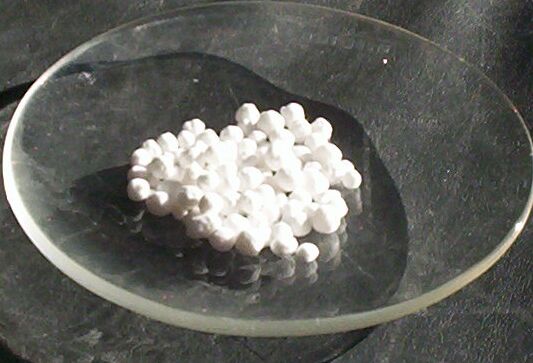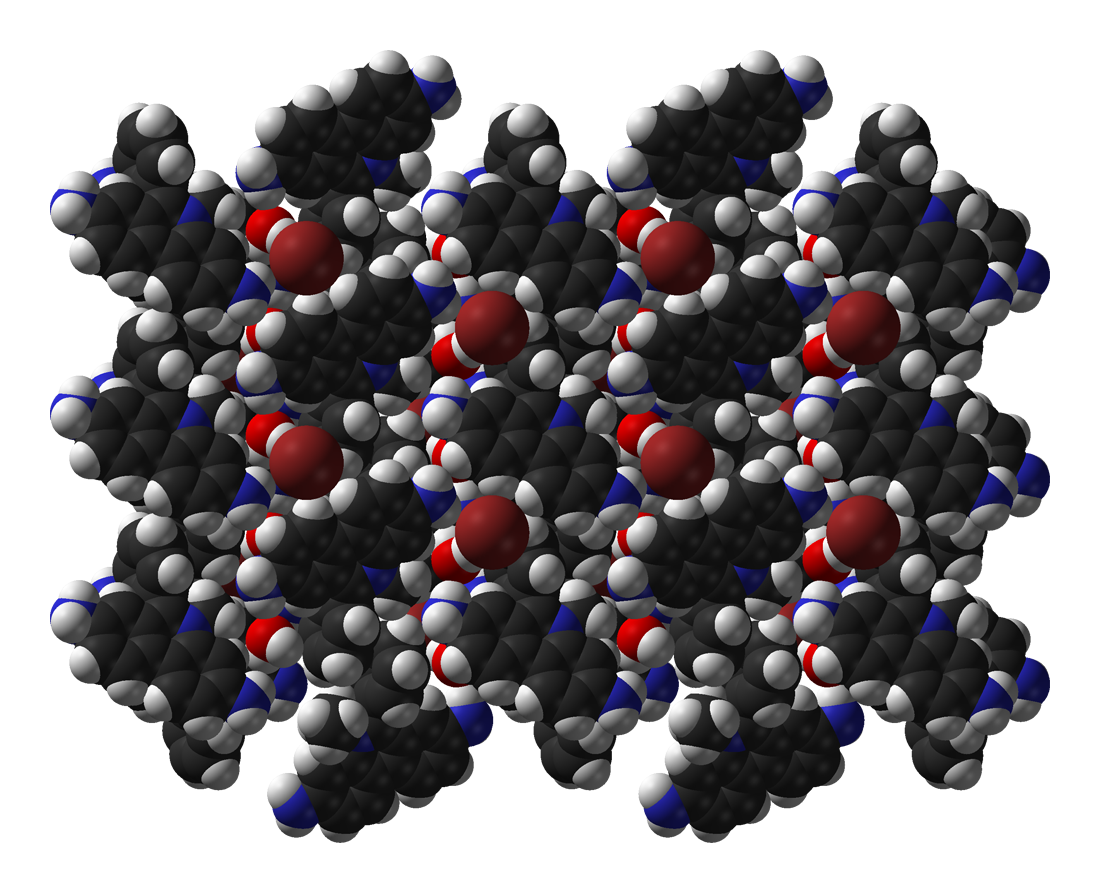Bromide
As Bromide salts of hydrobromic acid ( HBr) are referred to. But also organic compounds containing bromine are often called contrary to IUPAC rules bromides. The bromide ion is an anion, and is reduced also called bromide. It is among the halides.
Occurrence, Properties and Preparation
Silver bromide AgBr comes as bromide ( bromite, Bromargyrit ) in nature.
A bromide salt contains in its ionic lattice bromide ion (Br - ), the single negative charge. They arise for example in the reaction of metals with elemental bromine or hydrobromic acid. In the neutralization of metal oxides or metal hydroxides with hydrobromic acid bromide salts also caused these metals.
The inorganic bromides, for example, include the salts
- Iron (III ) bromide ( FeBr 3 )
- Potassium bromide ( KBr)
- Lithium bromide ( LiBr )
- Magnesium bromide ( MgBr2 )
- Sodium bromide ( NaBr)
- Rubidium
- Silver bromide ( AgBr )
In organic bromides which are not salts, bromine is present in the covalently linked state. The preparation takes place for example by the reaction of alcohols with hydrobromic acid by the addition of hydrogen bromide to alkenes, bromination of alkanes, aromatics or the kalalytische bromination of the Sandmeyer reaction. Examples of organic bromine compounds are
- Methyl bromide ( bromomethane )
- Methylene bromide ( dibromoethane )
- Benzyl bromide ( α -bromotoluene, bromomethylbenzene )
- Acetyl bromide ( Essigsäurebromid )
- Bromobenzene
There are also organic bromides, in which the bromine is present as a bromide ion, such as hydrobromides or tetramethylammonium bromide.
Proof
To detect bromide wet chemical is used, the detection reactions for halides.
When heated with concentrated sulfuric acid, inorganic bromides, rising brown vapors ( elemental bromine ).










